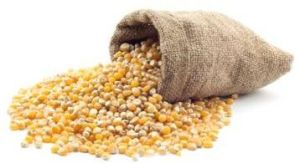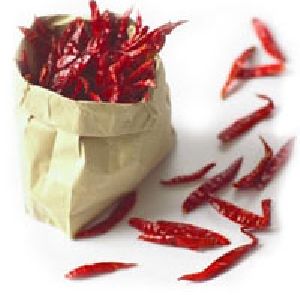
Turmeric Powder
Turmeric (Curcuma longa) is a rhizomatous herbaceous perennial plant of the ginger family, Zingiberaceae which is native to tropical South Asia. It is also known as kunyit (Indonesian and Malay) or haldi or pasupu in some Asian countries. Turmeric has a peppery, warm and bitter flavor and a mild fragrance slightly reminiscent of orange and ginger. Turmeric comes from the root of the Curcuma longa plant and has a tough brown skin and a deep orange flesh. Turmeric has long been used as a powerful anti-inflammatory in both the Chinese and Indiansystems of medicine. In medieval Europe, turmeric became known as Indian Saffron, since it is widely used as an alternative to far more expensive saffron spice.\ The best quality Turmeric fingers and powder are Erode Fingers Double Polish Single Polish Broken Fingrs kadi
...more
Sorghum
Sorghum is the fifth most important cereal crop in the world after wheat, rice, maize and barley. It is found in the arid and semi arid parts of the world, due to its feature of being extremely drought tolerant. The nutritional value of sorghum is same as of that of corn and that is why it is gaining importance as livestock feed. Sorghum is also used for ethanol production, producing grain alcohol, starch production, production of adhesives and paper other than being used as food and feed. Sorghum is popularly known as "Jowar" in India. The crop in the country stands at the third place in context of importance after wheat and rice. The grain had been used for consumption of both humans and livestock and also different genes of the plant serve many other important uses. The crop was introduced in India in the first millennium and since then it has been actively cultivated in the subcontinent. The production of sorghum in India reaches up to 9 million metric tons mark each year but last few years have shown a marginal but gradual decline in the production and productivity of the crop. The area under cultivation of the crop too has had a steep decline in the last 15 years i.e. 50% and 25% in the khariff and Rabi season respectively.
...more
Sesame Seeds
Sesame seeds have been grown in tropical regions throughout the world since prehistoric times; traditional myths hold that their origins go back even further. According to Assyrian legend, when the gods met to create the world, they drank wine made from sesame seeds. These seeds were thought to have first originated in India and were mentioned in early Hindu legends. In these legends, tales are told in which sesame seeds represent a symbol of immortality. From India, sesame seeds were introduced throughout the Middle East, Africa and Asia. Sesame seeds were brought to the United States from Africa during the late 17th century. Currently, the largest commercial producers of sesame seeds include India, China and Mexico. Natural white Sesame seeds Natural Sesame Seeds from the plant Sesamum Indicum L. Suited for human consumption.Odour, flavour : The odour and taste are typical, product specific. The product shall be free from foreign odours and taste such as mustiness or rancidity.Colour : WhitishCountry of Origin : IndiaPackaging : 12.5 kg, 25 kg, 50 lbs paper/poly bags, 1000 kg Jumbo BagsLabelling : As per buyer's requirementShelf Life : 1 year from production date.GMO Status : Not genetically modified (NON GMO)Storage condition : Cool and dry (
...more
Redskin Peanuts
Redskin peanuts is highly vulnerable to rainfall deviations and display huge, Around 75% of the crop is produced in khariff (June - September) and remaining 25% in Rabi (November - March).
...more
packing peanuts
Packing peanuts of the total oilseed production of the country. Annual production of seed and oil are around 5-8mln and 1.5 mln tons respectively. Production is highly vulnerable to rainfall deviations,
...more
Maize
Maize (Corn), is of American origin, and after wheat and rice, it is the most important cereal grain in the world. It provides nutrition to both humans (33.3%) and animals (66.6 %). Serves as basic raw material for the production of starch, oil and protein, alcoholic beverages, food sweeteners and more recently fuel. Special crops grown primarily for food include sweet corn and popcorn, although dent, starchy or floury and flint maize are also widely used as food. Flint maize is also used as feed. Immature ordinary corn on the cob either boiled or roasted is widely consumed. India's maize production fluctuates between 10-14 million tons, with 80-90% of the production being in the khariff season. Major states that contribute in Maize productions are Karnataka, Andhra Pradesh, Bihar, Punjab, Uttar Pradesh and Madhya Pradesh. Around 6.5 million tons (roughly 50 % of total consumption) goes for feed use, primarily for poultry feed. Another 1 million tons of corn is used by the starch industry.
...more
Groundnut Kernels
Groundnut is the major oilseed of India. It accounts for around 25% of the total oilseed production of the country. Annual production of seed and oil are around 5-8mln and 1.5 mln tons respectively. Production is highly vulnerable to rainfall deviations and display huge fluctuation between years Regional estimates are Gujarat (1-3.5 million tons), Tamil Nadu (1million tons), Andhra Pradesh (1-2 million tons), Karnataka (0.5 million tons), Maharashtra (0.5 million tons) are the major producers of seed. Around 75% of the crop is produced in khariff (June - September) and remaining 25% in Rabi (November - March). China and India is the major exporters of groundnut kernels, followed by Sub-Saharan African countries and Central and South America. Global trade of groundnut kernels is to the maximum of 1000000 tons a year. EU and USA are major importers.
...more
Dry Red chilies
India is the world's largest producer, consumer and exporter of chilies in the world. India also has the largest area under chilies in the world. Chilies are the most common spice cultivated in India. It is estimated that India produced 150,000 tons of dry chilies per year. Chilies are valued principally for their high pungency and color. Almost all the states of India produce the crop. The important chili growing states of India are Andhra Pradesh (46%), Karnataka (15%), Maharashtra, Madhya Pradesh, Orissa, West Bengal, Rajasthan and Tamil Nadu. The crop planting starts from August and extends till October. While, the harvesting begins from December with 5% of the arrivals usually reported in this month. The peak arrivals are reported in February to March.
...more
Brown Sesame Seeds
Our brown sesame seeds are small tasty, unhulled seeds that are used in cereals, crackers, spreads, drinks, casseroles, granola, candies, soups, salads, fish and baked goods. These brown sesame seeds are delicious when toasted and sprinkled on grains or main dishes. Also Known as tahini when ground into a butter. A nutritious mayonnaise substitute may be made by simply blending sesame seeds with water. *The above specifications to be considered as guidelines only*Indian Certificate of analysis final
...more
Black Sesame Seeds
Black Sesame Seeds from the plant Sesamum Indicum L. Suited for human consumption.The above specifications to be considered as guidelines only.Indian Certificate of analysis final. Odour, flavour The odour and taste are typical, product specific. The product shall be free from foreign odours and taste such as mustiness or rancidity.
Packaging Type : 12.5 kg, 25 kg, 50 lbs paper/poly bags, 1000 kg Jumbo Bags.
Shelf Life : 1 year from production date.
...moreBe first to Rate
Rate ThisOpening Hours